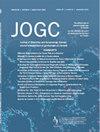Impact of COVID-19 Public Health Restrictions on the Home Birth Trends in Alberta: An Observational Retrospective Cohort Study
IF 2.2
Q2 OBSTETRICS & GYNECOLOGY
引用次数: 0
Abstract
This study examined the association between public health restrictions and the point prevalence of home birth in Alberta between January 1, 2017 and December 31, 2021 using administrative health data. Monthly home birth prevalences were examined over the pre-pandemic (n = 161 225), pandemic (n = 77 563), and pandemic wave periods via interrupted time series analysis. Logistic regression modelling estimated the association between home birth and monthly averaged Government Response Stringency Index. During the pandemic, home birth prevalence increased (pre-pandemic: 24.82, P < 0.001; slope: −0.02, P = 0.332; pandemic: level change:7.51, P = 0.006; slope change: −0.40, P = 0.061). Only the first pandemic wave showed an association between Government Response Stringency Index and the probability of home birth (OR 1.17; 95% CI 1.03–1.33).
新冠肺炎公共卫生限制对艾伯塔省家庭分娩趋势的影响:一项观察性回顾性队列研究
本研究利用行政卫生数据,研究了2017年1月1日至2021年12月31日期间艾伯塔省公共卫生限制与家庭分娩点流行率之间的关系。通过中断时间序列分析,研究了大流行前(n = 161 225)、大流行期(n = 77 563)和大流行波期间的每月家庭出生流行率。Logistic回归模型估计了家庭出生与每月平均政府反应严格指数(GSRI)之间的关系。大流行期间,在家分娩的流行率增加(大流行前:24.82,P < 0.001;斜率:-0.02,P = 0.332;大流行:水平变化:7.51,P = 006;斜率变化:-0.40,P = 0.006。只有第一波大流行发现GSRI与家庭分娩概率之间存在关联(OR:1.17;95%置信区间:1.03—-1.33)。
本文章由计算机程序翻译,如有差异,请以英文原文为准。
求助全文
约1分钟内获得全文
求助全文
来源期刊

Journal of obstetrics and gynaecology Canada
OBSTETRICS & GYNECOLOGY-
CiteScore
3.30
自引率
5.60%
发文量
302
审稿时长
32 days
期刊介绍:
Journal of Obstetrics and Gynaecology Canada (JOGC) is Canada"s peer-reviewed journal of obstetrics, gynaecology, and women"s health. Each monthly issue contains original research articles, reviews, case reports, commentaries, and editorials on all aspects of reproductive health. JOGC is the original publication source of evidence-based clinical guidelines, committee opinions, and policy statements that derive from standing or ad hoc committees of the Society of Obstetricians and Gynaecologists of Canada. JOGC is included in the National Library of Medicine"s MEDLINE database, and abstracts from JOGC are accessible on PubMed.
 求助内容:
求助内容: 应助结果提醒方式:
应助结果提醒方式:


